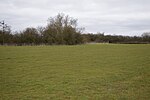Wotton House, Wotton Underwood, Buckinghamshire, England, is a stately home built between 1704 and 1714, to a design very similar to that of the contemporary version of Buckingham House. The house is an example of English Baroque and a Grade I listed building. The architect is uncertain although William Winde, the designer of Buckingham House, has been suggested. The grounds were laid out by George London and Henry Wise with a formal parterre and a double elm avenue leading down to a lake. Fifty years later William Pitt the Elder and Capability Brown improved the landscape, creating pleasure grounds with two lakes. After a fire gutted the main house in 1820 Richard Grenville, 1st Earl Temple, commissioned John Soane to rebuild it. After the 3rd Duke of Buckingham and Chandos, the last direct Grenville male heir, died in 1889, the house was let to a succession of tenants; including, notably; the philanthropist, Leo Bernard William Bonn (1850-1929) who became deaf while residing at Wotton, and later founded (1911) what became the RNID. His son and heir, the decorated First World War hero, Major Walter Basil Louis Bonn, DSO, MC, MA (Oxon.) FRSA, FZSL (1885-1973) is also listed as resident at Wotton House; in the New College archives, at Oxford University; during his three years as an Oxford undergraduate, there, 1903–1906, while living fifteen miles away from his family home of many years, at Wotton House.
In 1929 Wotton was bought by Major Michael Beaumont MP who renovated it. In 1947 Beaumont sold the estate to a charity who divided the grounds into small parcels and let the main house to two boys' schools. By 1957 the house had become derelict and was due to be demolished when Elaine Brunner found it and with the help of the architect Donald Insall restored most of the Soane features. Her daughter and son-in-law David Gladstone have continued the work she started. The South Pavilion (the former coach house) was sold separately in 1947. It has had a number of notable owners including Sir Arthur Bryant and Sir John Gielgud, and is now co-owned by former British Prime Minister Tony Blair and his wife Cherie, as well as David Gladstone, with Gladstone owning the main building (shown above) and the former British Prime Minister owning the smaller house next to it, with the fields of land being co-owned.









